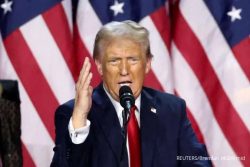Dear Editor,
I was fortunate to be at the Fairfield Pavilion (Richmond Hill, Queens) two weeks ago to hear President Donald Ramotar deliver a major speech which can only be characterized as a campaign speech. Many believe it is the unofficial launch of the campaign for the next elections. There were approximately 300 people in the audience, practically all Indian-Guyanese – everyone who would make the who’s who list was there. Nice ambience; Fairfield Pavilion Catering Hall boasts a prize-winning architectural design (architect Hansa Persaud) and is located in the heart of this Indo-Caribbean village; Guyanese cuisine and a guava-flavoured cocktail were in abundance.
President Ramotar covered a lot of ground but I would like to comment on just three issues.
Debt-servicing
With almost the first sentence, the President launched into a discussion of the pre-1992 PNC economy v the PPP’s post 1992 economy. I wondered whether something is wrong with this kind of comparison, this being the 21st year of the PPP’s government’s unbroken reign. Is this a strategy intended to hoodwink the people into worrying about the state of the economy 21 years ago rather than worrying about today’s economy? Today, the average wage has not kept pace with the cost of living. Too many letters and articles have been published on the working people’s daily struggles of making ends meet. In the 1980s Guyana’s economy had totally collapsed. It was insolvent. The economy began to turn around under the Hoyte government (around 1989-90) when the Paris Club agreements were signed and which made the economy solvent again. Once foreign bank money began to flow and flows from massive investments (Barama, Omai) and cambios were set up to make hard currency available to citizens, a normal economy began to take shape again and quickly replaced the suitcase economy that fed the nation for several years.
Post 1992 saw massive write-offs of debt to poor countries (HIPC), a UN-inspired programme that benefited many poor countries including Guyana. Nineteen ninety-two was a signal event: pent-up investors who were on hold began to invest, rice farmers began to till the land again, a large Guyanese population had settled abroad, and Guyana became largely a remittance economy. After year 2000, Guyana became largely a narco-economy; millions of dollars of narco-profits were invested in Guyana. And thus the semblance of a growing and thriving economy – but it is an economy with very serious problems. Corruption and narco-dollars will not flow forever.
Today, 21 years on, there should be no comparison of today’s economy with that of a period when the economy was insolvent. Is it a fair comparison? Is it done to pull wool over the people’s eyes? Is it a subtle hint at racism – pre-1992 was an African government; today you have an Indian government?
For academic reasons I invite readers to consider this: If Jagan, a Marxist, had been in power 1964-1992, would the economy have been in any better shape than what was realized under the PNC? Would the World Bank and IMF be lending us money? Would Western governments and trading blocs be buying our sugar and bauxite? Whether Jagan or Burnham occupied the saddle, it would have made no difference. Marxist/Socialist ideology, more than anything else accounted for the state of the economy in the 1980s, and both men were cut from the same cloth.
If we were to ask what specifically did the post 1992 government do to produce a growing economy? The only thing Jagdeo-Ramotar can point to is the US$50 million a year for 5 years carbon-trading deal, Jagdeo concluded with the Norwegians. This is a great boost to the economy together with the millions of dollars of new loans that were pumped into the economy after year 2000. Mr Jagdeo deserved some credit for these two items. However, there has been no structural changes to the economy; it is still based on two or three pillars – gold, sugar, rice, timber, narco-trade – and these of themselves (sugar is in trouble, gold is subject to massive fluctuations) do not produce a sustainable economy.
Marriott Hotel
President Ramotar launched into a vigorous defence of the Marriott deal. He painted a picture of a robust economy about to “take-off” (I thought he was hinting at Nobel Laureate’s Walter Rostow’s five-stage growth model); he made references to CGX exploring for oil, the mining sector (gold today contributes more to GDP than bauxite and sugar), and suggested broadly that thousands of “tourists” would descend on Guyana, and we would have no hotel rooms for them. He then likened the urgency of building the Marriott with man’s need to daily relieve himself. “Do you rush to build a latrine only when you need it?” he asked. He made references to Jamaica and Trinidad, countries that built Hilton and Marriott brand hotels. (Do we know if those governments own shares in those hotels or are they owned wholly by private investors?) He also dismissed the Pegasus hotel as unworthy and unfit for tourists. It is hard to imagine a head of state speak so dismissively of wholly-owned Guyanese businesses. It was a real put-down of Guyanese investors.
Guyana’s economy is not in a take-off stage. The hotel occupancy rate is below 50 per cent. There is absolutely no justification to use taxpayers’ money to build a hotel, an enterprise that should be left wholly to private investors. This question and numerous others were not addressed by Mr Ramotar.
Did the government not say that the Marriott hotel is a partnership of government and private investors? Where are the private investors? None to date has shown up or been named. Now we are told government is negotiating with an investor to sell the unfinished steel structure of the hotel? Is this not a scandal of major proportions involving people at the highest levels of the government? Aren’t the citizens right to suspect the whole scheme?
If this is a partnership deal involving state funds, should the partners be given cover of state secrecy? Did they pay up for the shares they supposedly purchased? They obviously never existed. Now we see government is scrambling to find an investor to sell 67 per cent of the hotel. Can government recover taxpayers’ money in such a hot deal?
This past week, NIS reported the employer base is shrinking – this means fewer firms to provide employment. This is certainly not an economy on take-off. President Ramotar’s bombast on display at the Fairfield Pavilion was nothing, if not a smokescreen to hoodwink and conceal potential irregularity in the Marriott debacle.
‘People getting killed every day’
The meeting was emceed by Dr Rajendra Singh (GuySuCo’s Executive Chairman). He made the bold decision to invite questions. Stanley Raj (Insurance Broker) asked about the crime situation in Guyana. He said he just returned from Guyana and “people are getting killed there every day.” ‘What is your plan, Mr President, to make this country safe for its citizens?’ asked Raj. Several others asked the same crime question; one urged the President to fire the Home Affairs Minister, Rohee.
President Ramotar began by saying, “We are not all that bad, other Caribbean governments have more crime.” The murmurs and grumbles signalling disgust with this stock-in-trade answer rose; one voice said “Oh, hell not again,” others echoed him and a slow clap of protest began. The President quickly changed his line and said, “We gave the police more resources…” His answer trailed off into nothingness and foolishness. He said nothing that would suggest he has a bold plan to deal with homicides that have been spreading in the countryside, or that he understands the causes of crime.
Because high levels of crime have become normal or cultural for many years (meaning you’ve got to accept and learn to live with it), the government of the day has a responsibility to come up with a plan to roll back the cart to old “normal levels.” Does government have a plan? Reverend Gideon Cecil in a letter in SN called on the government to use the army. Let armed soldiers’ presence be felt and seen outside government buildings and banks, Cecil wrote. This should deter criminals, and if more criminals are caught red-handed this would send a message for all professional criminals to find another trade. Rev Cecil has a plan. Would the government buy into it? Let not the government say the army is governed by other laws. Governments exist to make laws that in turn would make people’s lives safe and secure. Declare a state of qualified or limited emergency, and mobilize the army for 6 months to do joint patrols with the police. The citizens of this country are traumatized because “you can be killed at any time” and such deployment of the army will restore confidence and lower the crime rate.
Talking about crime, let us recall the killings of Minister Sawh and most of his family. While the hired killers (it has been widely rumoured that a drug don had ordered this hit) were executing their order, guards on duty at nearby houses watched helplessly. Guards do not carry guns in Guyana. It seems, given the ease with which criminals are able to procure guns, that government should arm the population. Train 50,000 citizen-households in the proper handling of guns, and give them guns, so they can protect themselves and their neighbours’ lives and property. One hundred armed burglars caught in the act and killed by armed citizens will force these would-be killers to find another trade. Leslie Stahl (CBS, ‘60-minutes’) once did a crime story, citing the State of Florida with the high household gun-ownership and low crime rates.
The President should be told in no uncertain terms: A policy of doing nothing is not good governance. As long as you maintain this do-nothing policy, crime will get worse.
One final pivotal question. Someone asked for the Minister who holds the law and order portfolio to be fired. President Ramotar became temperamental and seemed to suffer a tantrum or a fit. He said, “When PNC wins the next election, they will have a chance to replace Rohee.”
He was cocky and confident the PPP will win the next election. Sadly he wants to turn this thing into an African-Indian issue. He does not realize it is his own supporters, Indians, who want Minister Rohee to be replaced. Sadly, he has no understanding of the doctrine of ministerial responsibility which calls for a minister to be replaced when things go terribly wrong in his ministry.
Former president Jagdeo turned up at the meeting mid-way, and was invited to speak. He repeated the debt-service stats (obviously it is their mantra) and sought to enunciate a “two philosophies” theory to explain the opposition’s behaviour. He said many Guyanese believed the struggle for democracy was restored with free and fair elections in 1992, but they were wrong. He called on them to continue the struggle. Sadly this ex-president lost me completely. I have no idea what he was talking about.
Ministers Ashni Singh and Carolyn Rodrigues-Birkett sat on the stage but were not given a chance to even deliver a greeting. Someone decided the spotlight should shine strictly on the all powerful Guyanese president.
I wonder whether this was not a big mistake. I left the meeting in distress. As I walked to my car, I felt relieved; my final guava-flavoured cocktail was doing wonders.
Yours faithfully,
Mike Persaud




